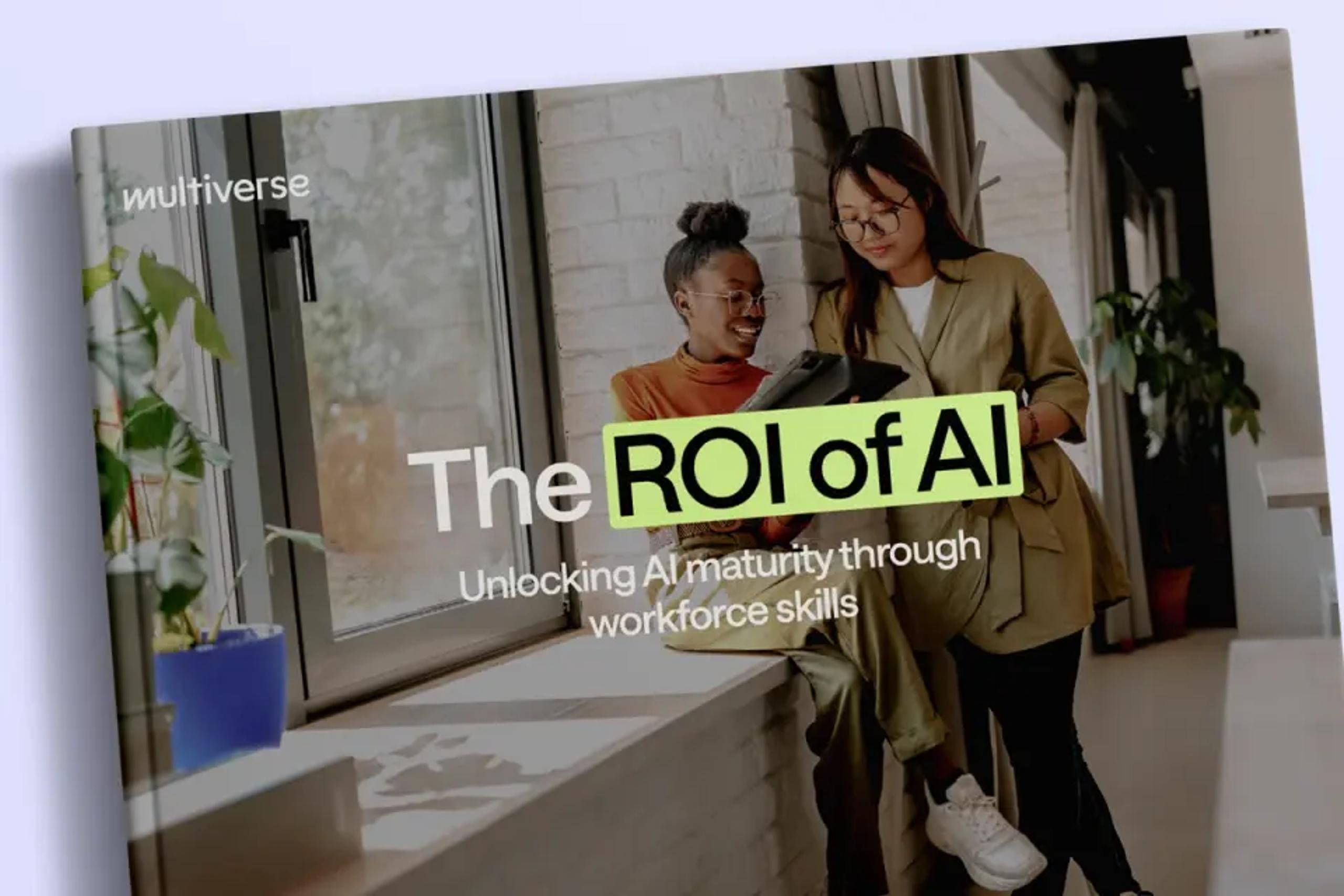Contents
Diversity hiring should be your #1 priority. Fact.
Diverse teams have more ideas, increase productivity, send your revenue spiralling upwards and even attract fresh talent.
Need we say more?
For many, the first step to increasing diversity is to create an awesome apprenticeship scheme.
With the Apprenticeship Levy in full swing, orgz around the country are building incredible programmes—and there has never been a better time to jump on the bandwagon.
“I think it’s important to know that to find good talent you don’t always have to look at university now. Apprentices are now a good way to find that talent and find something to offer these people who are leaving school that they’re not offered anywhere else,” says Laura Tomsett, Recruitment Advisor at Christie’s.
But just because more companies are taking on apprentices, doesn’t mean increasing diversity is easy—we are human after all. And unfortunately, humans come with a whole host of inbuilt biases.
Even if you manage to side-step your prejudices, there’s still indirect procedural discrimination to navigate.
In other words, diversity hiring can be a minefield.
But don’t worry. We’re here to help you create an inclusive, productive workplace with our latest unmissable guide—so read on to find out exactly what diversity hiring is, where apprenticeships fit in, and how you can build your own inclusive talent processes.
Table of contents
- What is diversity hiring?
- Why is diversity hiring important?
- Step 1: Use apprenticeships to build diversity into your org
- Step 2: Audit your current hiring process
- Step 3: Ask your employees what inclusion initiatives they'd like to see
- Step 4: Improve your diversity hiring one metric at a time
- Step 5: Revamp your candidate sourcing, screening and shortlisting process
What is diversity hiring? Understanding direct and indirect discrimination
Diversity hiring aims to combat any potential discrimination.
It’s based on merit, and special care is taken to ensure procedures are fair and free from bias.
But it's harder than it sounds.
From unconscious stereotypes to all-out discrimination, diversity is a difficult road to navigate—and even if you’d never dream of directly discriminating, there’s still the difficult world of indirect discrimination to tackle.
It's important to familiarise yourself and your company with the details of diversity hiring so you don’t miss out on any rockstar candidates.
What is direct discrimination?
According to the Citizen’s Advice Bureau (CAB), direct discrimination(opens new window) is “when you’re treated differently and worse than someone else for certain reasons.”
This could be because of any of the following ‘protected characteristics’: age, disability, gender, race, pregnancy/maternity, religion or sexual orientation.
What is indirect discrimination?
The CAB describes indirect discrimination(opens new window) as “when there’s a practice, policy or rule which applies to everyone in the same way, but it has a worse effect on some people than others.”
Again, this could apply to any of the protected characteristics listed above.
In other words, indirect discrimination is unintended discrimination that happens because of a company's policies.The goal is to make sure both direct and indirect discrimination are entirely wiped out—hurrah! 🎉
Why is diversity hiring important?
To truly understand why you should be tackling diversity hiring now, it’s time to take a look at the hard stats.
- Companies with inclusive talent practices generate up to30% higher revenue(opens new window) per employee.
- Gender-diverse companies are 15% more likely to outperform their competitors and ethnically-diverse companies are 35% more likely(opens new window) to do the same.
- Not only that, 67% of job seekers(opens new window) say they care about your diversity statistics.
Pretty convincing, right?
We think so.
And Stephanie Draper, CEO at Bond the UK Network for NGOs, agrees—they have recently set up an unrivalled system to transform the way NGOs hire, train and retain talent.
“Getting an entry level role at an NGO can be very competitive and historically this has meant they have gone to [candidates] with extensive higher education or one type of socio-economic background. Over time this has led to a lack of diversity across the sector… [Apprenticeships] will bring in a new generation of diverse talent,” she says.
So where do you start?
Here’s how to create a totally inclusive hiring process.
Step 1: Audit your current hiring process
If you’re serious about increasing diversity hiring, it’s time to break out the magnifying glass and take a good look at your current hiring process.
Because this is where the indirect discrimination hurdles are hiding.Here are some tips on where to start:
- Look at your hiring process as a whole and identify any bottlenecks and discrepancies. Are there any points where candidate diversity gets weaker?
- Ask yourself what are the strengths and challenges of your diversity hiring. What can you improve?
- Are there any policies or procedures which could impact on a particular group? For example, do you still ask for ‘energetic’ candidates in your job descriptions? This could put older qualified applicants off.
Remember, under the Equality Act 2010 discrimination is unlawful—so making your processes discrimination-free is an absolute must.
Step 2: Ask your employees what inclusion initiatives they'd like to see
Diversity is a one-way road to a happier team. 😄
So becoming a more inclusive company should be on everyone’s agenda.
To ensure your team is involved from day one, ask around to find out what inclusion initiatives they’d like to see—you could also use this as an opportunity to open the conversation about a new apprenticeship scheme.
You could ask things like:
- Is there anything about the hiring process they think is obstructing diversity?
- What do they think is working well?
- What new inclusion initiatives would they like to see? (i.e., new procedures, inclusion events, training, etc).
After consulting with her team, Meera Patel, Talent and Diversity Specialist at Bulb, decided an apprenticeship scheme was the way to go.
“As a team, we decided that hiring apprentices was a good idea… We want people to feel happy about themselves and happy talking about their identities. We want them to be honest. We want them to be able to be themselves at work,” she says.
Step 3: Improve your diversity hiring one metric at a time
Already have a diversity initiative in place?
Many companies do. But if you have a sneaking suspicion its not doing the job it was meant to do, it might be time for a revamp.
Whether this is your first attempt at a more inclusive workplace, or you've been at it for years already, improving your workplace can be overwhelming.
That’s why it’s important to take one task at a time from your audit and do that well, then move onto the next thing—rather than rushing to do everything at once.
Prioritization is key. Make sure the first task you choose will make most difference to your diversity hiring.
For example, you could start by contacting an apprenticeship management organization to talk you through setting up a new scheme. Or perhaps you’d rather focus on increasing the diversity of voices on your hiring panels.
At times it may feel like a lot to tackle but remember the fact you’re working on it at all deserves a gold star. 🌟
Step 4: Revamp your candidate sourcing, screening and shortlisting process
Okay, you’ve got your apprenticeship scheme moving, your team’s on board with diversity, plus you’ve aced your hiring audit and prioritized your tasks.
Now it’s time to get down to the nuts and bolts.
Hiring audit in hand, you should see your obstacles clearly. Are they in your candidate sourcing? During the screening process? Or when you start to shortlist?
Let’s go through these one by one and blitz this thing together.
How to ace your candidate sourcing
If your audit shows your candidate sourcing is bottlenecking diverse candidates, take note of these tips to help float all your sourcing worries away:
- Work on your job listings: Go through your job post wording(opens new window) with a fine-tooth-comb. You want to make sure to avoid words and phrases that discourage certain groups from applying—so leave words like “energetic”, “dominant” and “need not apply” at the door.
- Get flexible: According to a study by Powwownow(opens new window), three quarters of UK employees want a job with flexible working options. Make sure your job posts state any flexible work opportunities, including apprenticeships—and if you don’t offer any yet, now’s the time to change.
- Open your doors to new candidates: Literally. Run an open day and invite new candidates to see what you’re all about. Ask your employees to spread the word and show your inclusivity by inviting diverse groups.
- Shout about your commitment to diversity and inclusion: Optimise your careers site and job adverts to openly state your commitment to diversity and inclusion. And for heaven's sake, make sure your photos and other employer brand images reflect that.
How to take the discrimination out of candidate screening
You might find your sourcing is AOK, but it’s your screening process that’s letting you down.
Lucky for you, there are loads of easy-win ways to make sure your candidate screening is discrimination-proof—from getting multiple people making hiring decisions, to using tech to ‘blind screen’.
Here are a few pointers to get you started:
- Blind screen CVs: These days it’s pretty common to black-out names, schools, dates of birth and any other background info that could be used to discriminate applicants—meaning you only see the content that really matters.
- Enlist tech to diversify the hiring process: When it comes to recruitment, tech really shines out. Choose an applicant tracking system (ATS) that allows you to filter certain info to avoid unconscious bias from day one.
- Share your hiring decisions: Get a colleague to help with the hiring process so that you have more than one set of eyes on the job. Explain your decisions to each other—and if you can’t justify a reason for ditching an applicant, you should probably keep them in.
How to shortlist to success
Right. You’ve got your sourcing and screening sorted, now it’s time to create a rockstar shortlisting process.
- Let your colleagues have a say: Shortlisting is another great excuse to get your colleagues on board with hiring to help justify your decision-making process.
- Make sure your hiring board is diverse too: Get a diverse group to help with hiring decisions. Ask colleagues of all levels to take part, change the group regularly, and work together to get awesome candidates on board.
- Use an ATS to shortlist: To truly rock diversity hiring invest in an automatic software system. Just like in the screening process, an ATS can help(opens new window) ‘blind shortlist’ candidates based on previously agreed requirements.“Two in the Pool”: According to Harvard Business Review(opens new window), if you have only one female in a candidate pool, there’s statistically no chance she will be hired—no matter how qualified. Make sure to have two or more diverse candidates to help applicants’ chances.
Step 5: Say ‘Yes!’ to apprenticeships
Starting an apprenticeship scheme is really not that hard.
The great thing about them is they can help bring in fresh new candidates from untapped sources—for example, people without a Uni degree or those from lower socio-economic backgrounds—which means hiring apprentices is a great way to increase the diversity of your teams and build into the very fabric of your organisation.
Emma Bond, Global Lead of Entry Level Hiring at Kantar, agrees. “We want a workforce that represents the population because for us, inclusion, diversity and social mobility are important. To make a change you need to start at the bottom and filter up to the top.
”The key to a successful scheme is getting your team on board and making sure everyone’s on the same page—and because your company has to pay into the Apprenticeship Levy anyway, you might as well make use of the extra dosh and get some apprentices through the door.
Go from zero to a diversity hiring hero
It’s no secret diversity hiring is a big mountain to climb.
But the sooner you get started, the sooner you’ll reach the peak—and trust us, it does become easier as you go.
Just imagine the day you have a group of hardworking apprentices feeding into the company, and a super streamlined hiring process that highlights every amazing applicant.
Sounds good, right?
Now use that image to keep you going—and before you know it you’ll be at the top of the diversity hiring mountain wondering why you didn’t tackle it earlier.




